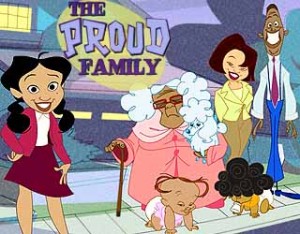“Eagle Dad”
On February 9, 2012, CNN posted an article about a Chinese family that sparked controversy from the U.S. to Beijing about Chinese parenting techniques. In the article, the father of a four year old little boy posted a video where he demonstrates his parental philosophies by showing his son with hardly any clothes on running in the snow crying for his parents to pick him up. The father says he and his wife made their son run and lay in the snow, wearing only shoes and his underpants, to toughen him up. I personally believe that parents should be able to raise their children as long as they are not seen as unfit. I would never require that my own child do as the four year old was depicted in the CNN article, however, I would also not support anyone telling a parent how to raise their children. I personally believe that rearing a child with a belt is a great way to teach a child a lesson when others may call the slightest infliction of pain “child abuse.”
So, what I have noticed when children are the root of a social dispute is that there is a very fine line between what is best for a child and what is harmful to that child. In her book “From Useful to Useless,” Viviana A. Zelizer tells how social disputes concerning child labor laws emerged at the turn of the 20th century. By the age of six, children were starting to help out their families by entering into the work force. Those who opposed children working this early might have referred to child labor as “child slavery” just as Indiana Senator Albert Beveridge did. (36) Christians felt that “A man who defends the child labor that violates the personalities of children is not a Christian…” (37) Would making your child run around half naked in freezing cold weather violate the personality of that child? The Chinese father says that his parenting doesn’t go against his son’s will. His method could be argue as “greedy and brutal tyrants” just as Employers of young children were depicted as in Zelizer’s writings. (37)
What if the Chinese father was also raised the same way he chooses to raise his son? Could he associate his upbringing with his success? Many people who argued for child labor felt just as such. People who grew up on their families farm working hard thought it helped instill honor, virtue, and a greater work ethic. They believed children who weren’t required to work would be weaker than the hard working population. This is very similar to the Chinese dad believing that his parental technique would strengthen his son both mentally and physically in the long run. In Ross F. Collins’, “Boy Scouts: A Battle for Martial Values,” there was a similar dispute over our young generation being taught to be militant. Those who believed in this type of traing felt that “modern life was sapping the American boy of his strength.” (104) So, how far is too far?
Well, with great disputes comes mass media. What helped the labor reformers according to Zelizer, was the rising popularity of the issue. (36) Seeing that this father’s video of his parenting technique made a guest appearance on CNN, we may experience a rise in awareness that could trigger a reform in Chinese parenting laws.




